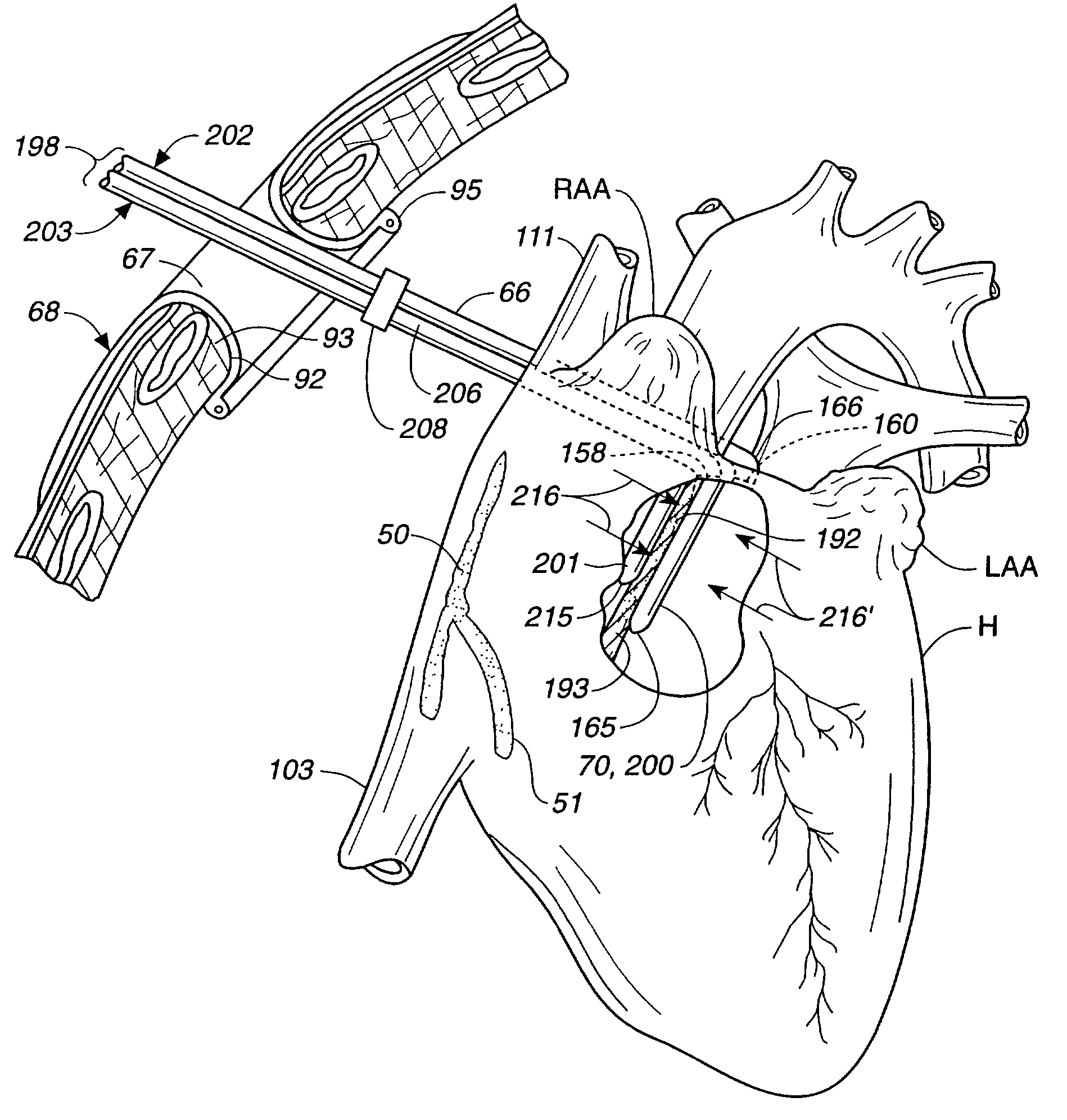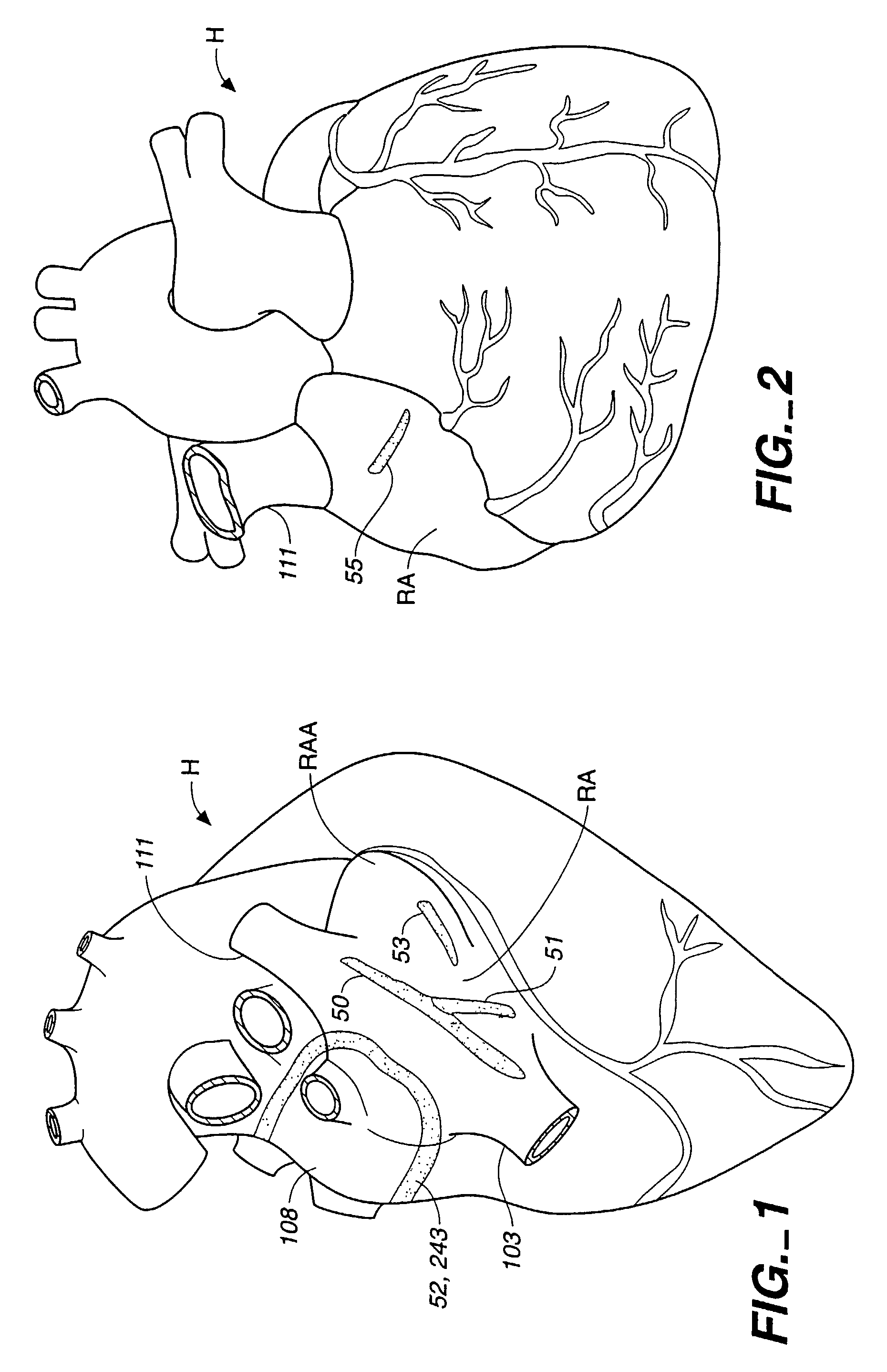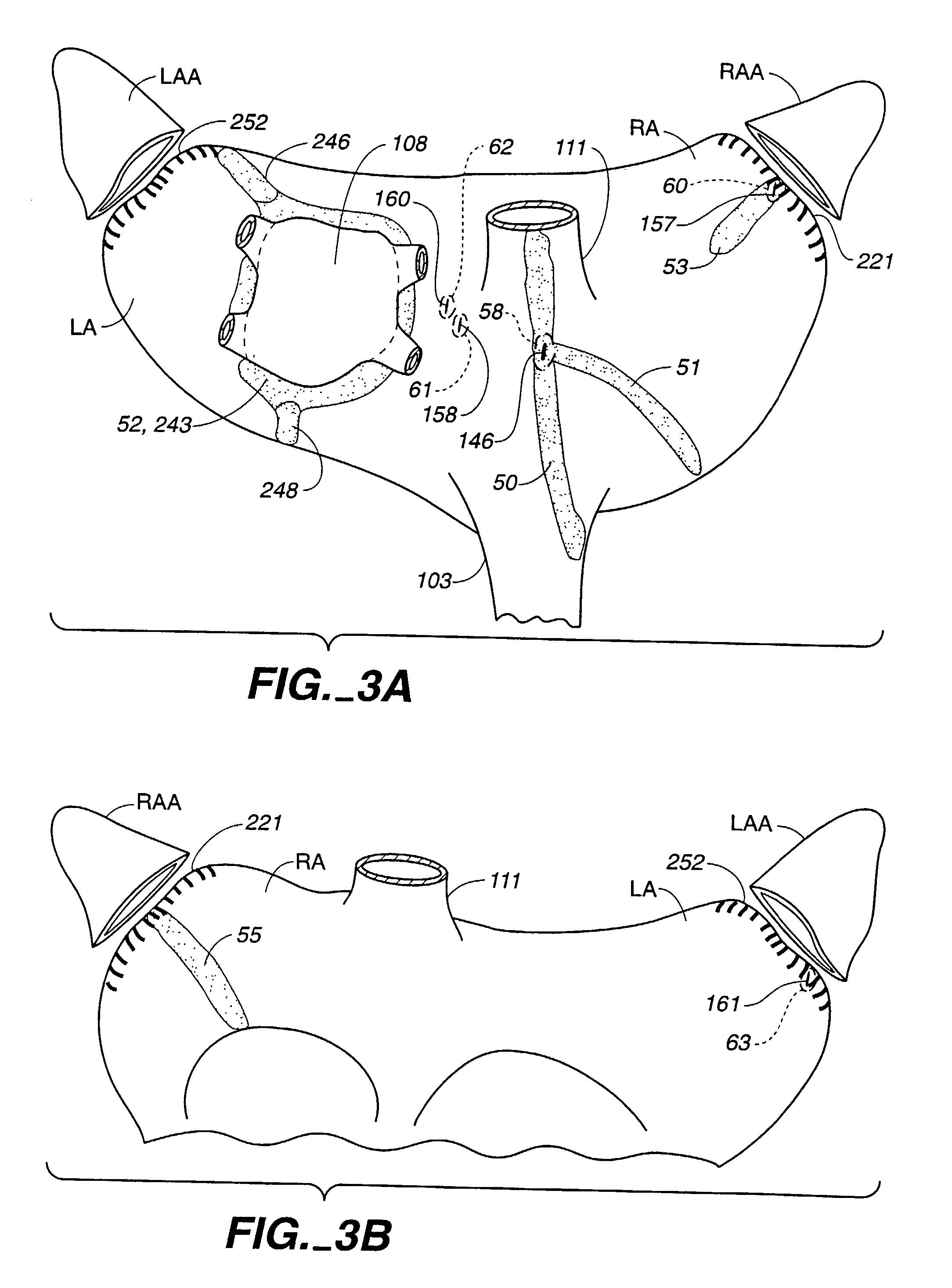Surgical system and procedure for treatment of medically refractory atrial fibrillation
a technology of atrial fibrillation and surgical system, which is applied in the field of surgical system and procedure for the treatment of medically refractory atrial fibrillation, can solve the problems of ventricular rate control continuing to suffer from irregular heartbeats, affecting the treatment effect, so as to achieve the effect of inhibiting blood loss
- Summary
- Abstract
- Description
- Claims
- Application Information
AI Technical Summary
Benefits of technology
Problems solved by technology
Method used
Image
Examples
Embodiment Construction
[0073]Attention is now directed to FIGS. 1-3 where a human heart H is illustrated incorporating a series of strategically positioned transmural lesions throughout the right atrium RA and the left atrium LA formed with the heart treatment procedure and system of the present invention. FIG. 1 represents the desired pattern of lesions created on the right atrium RA, including the posterior longitudinal right atrial lesion 50, the tricuspid valve annulus lesion valve annulus lesion 51, the pulmonary vein isolation lesion vein isolation lesion 52 and the perpendicular lesion 53; while FIG. 2 represents a right, anterior perspective view of the heart H illustrating right atrium RA including a right atrial anteromedial counter lesion 55. The cumulative pattern of lesions reconstruct a main electrical conduction route between the sinoatrial node to the atrioventricular node to postoperatively preserve atrial transport function. Unlike prior surgical treatments, the system and procedure of t...
PUM
 Login to View More
Login to View More Abstract
Description
Claims
Application Information
 Login to View More
Login to View More - R&D
- Intellectual Property
- Life Sciences
- Materials
- Tech Scout
- Unparalleled Data Quality
- Higher Quality Content
- 60% Fewer Hallucinations
Browse by: Latest US Patents, China's latest patents, Technical Efficacy Thesaurus, Application Domain, Technology Topic, Popular Technical Reports.
© 2025 PatSnap. All rights reserved.Legal|Privacy policy|Modern Slavery Act Transparency Statement|Sitemap|About US| Contact US: help@patsnap.com



